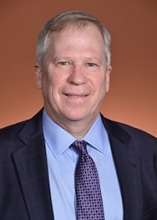
W.W. Mullins Professor and Chair
Department of Materials Science and Engineering
Carnegie Mellon University, Pittsburgh, PA
Abstract: Near field high-energy X-ray diffraction microscopy, a non-destructive, synchrotron based 3D characterization technique, was used to track the microstructural evolution of high purity polycrystalline Nickel annealed at 800°C. We tracked volume changes in approximately 2,000 grains over the six anneal states.
It was observed that neither the size of a grain nor the number of its nearest neighbors are strongly correlated to a grain’s volume change over the time scale of this experiment. However, a grain's environment was influential in determining whether a grain grows or shrinks. These data also made it possible to evaluate the anisotropy of interface properties such as grain boundary energy, curvature and area. When the motion of individual grain faces was examined, strong correlations between the orientation of the grain face in the crystal reference frame and its area change during annealing were observed. Grain faces with 111 orientations experienced the greatest changes in area and also increased in relative area. The observations demonstrate the importance of the anisotropic properties of grain boundaries in determining how grains grow within polycrystals.
Bio: Gregory S. Rohrer received his bachelors degree in physics from Franklin and Marshall College, his doctorate in materials science and engineering from the University of Pennsylvania and joined the faculty at Carnegie Mellon in 1990, where he is now the W.W. Mullins Professor and Head of the Department of Materials Science and Engineering. Rohrer has authored or co-authored more than 300 publications. He is a fellow of the American Ceramic Society, and his research has been recognized by a number of awards including the Richard M. Fulrath Award, the Robert B. Sosman Award and the W. David Kingery Award, all of the American Ceramic Society. In 2011, he served as chair of the University Materials Council, from 2016 to 2019, he was a member of the Board of Directors of the American Ceramic Society, and he is currently an editor of Acta Materialia.
Share
Upcoming Events
-
MSE 298 Seminar: Mechano-Electrochemical Phenomena at Ceramic Electrolyte Interfaces
-
CBE 298 Seminar: Beyond the Tailpipe - From the Science of Soot Formation to the Engineering of Carbon Nanomaterials
-
MSE 298 Seminar: Innovation In Materials Science - An Industrial R&D Perspective
-
MSE 298 Seminar: Understanding the Impact of Grain Boundary Inclination on Grain Growth Using Modeling and Simulation and Experiments
-
EECS Seminar: Mixed Conductors for Bioelectronics
